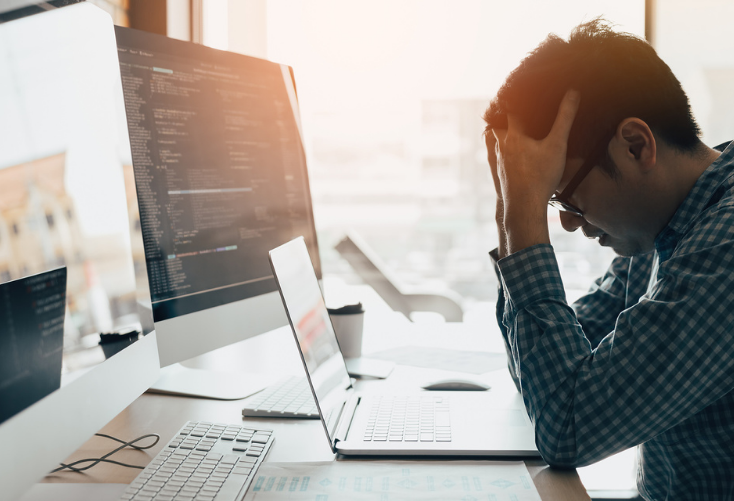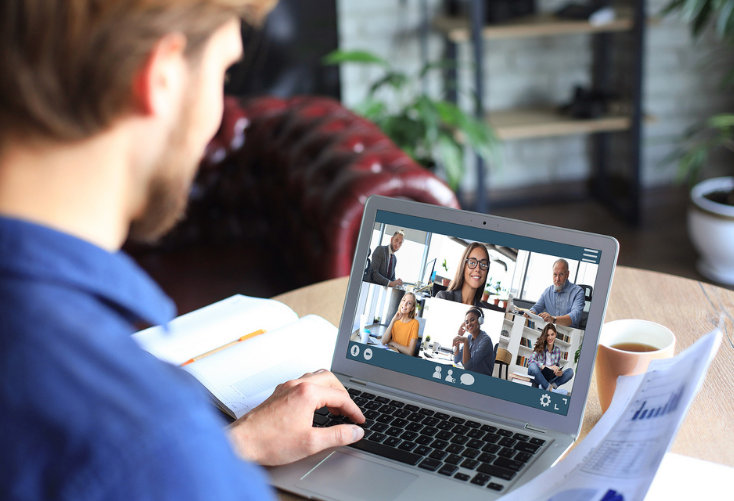Hand selected flexible workspace news from the most reliable sources to keep you ahead of the pack. We find all the latest news, so you don’t have to. Morning and afternoon updates. Stay in the know.
Here’s what you need to know today:
- The Office Will Never Look The Same NEW
- What Causes Workplace Burnout? NEW
- How The Hospitality Industry Is Supporting “Bleisure” NEW
- Finding The Right Work Arrangement
- Lord & Taylor’s Buffalo Location To Open Coworking Space
- The Majority Of Workers Want A Hybrid Workplace
The Office Will Never Look The Same
The office isn’t dead, but it will look much different in the near future. As companies begin to slowly bring their workers back into the workplace, they are taking extra precautions to keep them safe.
According to a study from Kastle Systems, 38% of workers have returned to offices in North Texas, compared to the 24% national average.
Whether there is a COVID-19 vaccine by the end of the year or not, changes to traditional office design is inevitable.
Now, instead of the prior trend of high-density workplaces, companies are reconfiguring their offices to be distanced and flexible, while still nurturing collaboration.
This will include touchless technologies and other designs that emphasize the importance of health and productivity. For instance, the new office project Victory Commons One will include an upgraded HVAC system that includes UV air purification in the building and elevators.
Additionally, developers are looking to eliminate high-touch areas by implementing automated doors, touch-free faucets, voice recognition technology and more.
Reduced capacity in the office will also be essential moving forward, as well as encouraging one-way traffic, implementing a face mask rule and limiting the amount of people in the workplace.
Because workers have expressed the need to come into the office for the socialization and connection with colleagues, it is vital for companies to provide solutions that fulfill the employee experience.

What Causes Workplace Burnout?
The term “burnout” has become part of our everyday jargon as people adjust to living in a pandemic-ridden world.
Now that millions of people have been working from home for the first time, more have experienced the impact that burnout can have on their everyday lives.
According to Christina Maslach of University of California, Berkeley and Michael Leiter at Saint Mary’s University, overwork and lack of resources are major factors that contribute to burnout.
“We should be trying to identify and analyze the critical components of ‘bad’ situations in which many good people function,” said Maslach. “Imagine investigating the personality of cucumbers to discover why they had turned into sour pickles without analyzing the vinegar barrels in which they had been submerged.”
Burnout means more than increased stress levels. On the contrary, someone experiencing burnout can see such a negative mental health decline that can directly impact their financial standing and physical health.
Those who are at high risk of burning out are those who are self-described “workaholics”, a workplace that lacks communication, lack of personal coping skills and much more.
So how can organizations help workers reduce their risk of burning out? For starters, it is important to review managerial behavior and whether it is supporting and nurturing work culture.
Every person is living through a once-in-a-lifetime experience at the moment, and focusing heavily on short-term metrics without any semblance of empathy is counterproductive.

How The Hospitality Industry Is Supporting “Bleisure”
The hospitality market has been scrambling to find new ways to grow revenue, particularly as lockdowns continue to hurt the overall travel industry.
Companies like Hilton started offering their rooms as office spaces, but the plan did not see great demand and they soon reverted back to normal rooms.
However, thanks to modern technology, digital nomads want to combine their business with leisure time, or “bleisure.”
So how do hotel designers and operators meet this demand of blending both work and leisure together?
Hospitality firm CitizenM successfully does this by building out their boutique hotels for traveling professionals. It offers lounges and bars perfect for socializing, as well as areas for working.
Still, analysts predict that as people continue to work from home, traveling will not completely recover for at least another few years.
Business travel is already very regulated, and now more than ever, companies want to keep their employees safe and healthy.
Overall, it is clear that the hospitality industry will need to be prepared to meet varying demands for hotel guests in the future. This includes strong Wi-Fi connection, increased sanitation practices, or a private workspace free of distractions.

Finding The Right Work Arrangement
Businesses have been through some of the most challenging times that the world has ever seen. While some have adjusted to the new way of operating, what works today may not be the case in a month.
Remote working has become the mainstay for several organizations, but some have begun to open their doors again. Does this mean that the office will go back to playing the same role it did eight months ago?
According to Global Workplace Analytics, 56% of US workers have jobs that can be done remotely. However, some studies indicate that working remotely most of the time can hinder creativity, collaboration and workplace culture.
This has led some companies to adopt a “blended office model” which allows for both in-office and remote working arrangements. Employees get the opportunity to work from the safety of their homes, but also have the option to come into the office when necessary.
Still, adjustments must be made to the physical workplace in order to meet health and safety guidelines. This means implementing distancing, limiting capacity and increasing sanitation practices.
Additionally, and maybe most importantly, is navigating how to support the employee experience no matter where someone decides to work. This means ensuring that they are safe when working from home and in the office, as well as equipped with the tools and resources to effectively work throughout the pandemic.

Lord & Taylor’s Buffalo Location To Open Coworking Space
Lord & Taylor will reportedly welcome a new coworking center, coined York Factory, in its Cheektowaga location just outside of Buffalo, New York.
Le Tote, the French conglomerate that owns the chain, recently revealed that it would be closing all 38 Lord & Taylor locations.
However, the firm recruited CBRE Buffalo to look for coworking office tenants to take up space at the 99,534 square foot building in the Walden Galleria.
Hudson’s Bay Co., the former owner of Lord & Taylor, is in the midst of a $846.2 million foreclosure lawsuit against Wilmington Trust Co.

The Majority Of Workers Want A Hybrid Workplace
A new survey from workplace scheduling company Smartway2 has found that only 6% of employees want to work from home full-time after the pandemic has ended.
“Organizations have found that employees want the best of both worlds,” said John T. Anderson, CEO of Smartway2. “They want the flexibility of being at home with no commute, and at the same time, they want the collaboration and socialization of the workplace. According to our survey, nearly all employees are interested in a blended arrangement of working from home and office, and forward-thinking companies are already beginning to reimagine ways of operating – with the help of technology – to create this optimal work environment.”
92% of respondents said they want to work both from home and in the office, with 39% stating they would still want to work from home most of the time.
Additionally, respondents revealed that their remote working arrangements fall short of essential needs of the workplace, including social interaction and spontaneous collaboration.
However, workers said that they appreciate the flexibility working from home offers, as well as the decreased distractions.
This indicates a distinct shift in workplace operations, and organizations will need to prepare for a much more agile environment moving forward.



 Dr. Gleb Tsipursky – The Office Whisperer
Dr. Gleb Tsipursky – The Office Whisperer Nirit Cohen – WorkFutures
Nirit Cohen – WorkFutures Angela Howard – Culture Expert
Angela Howard – Culture Expert Drew Jones – Design & Innovation
Drew Jones – Design & Innovation Jonathan Price – CRE & Flex Expert
Jonathan Price – CRE & Flex Expert













